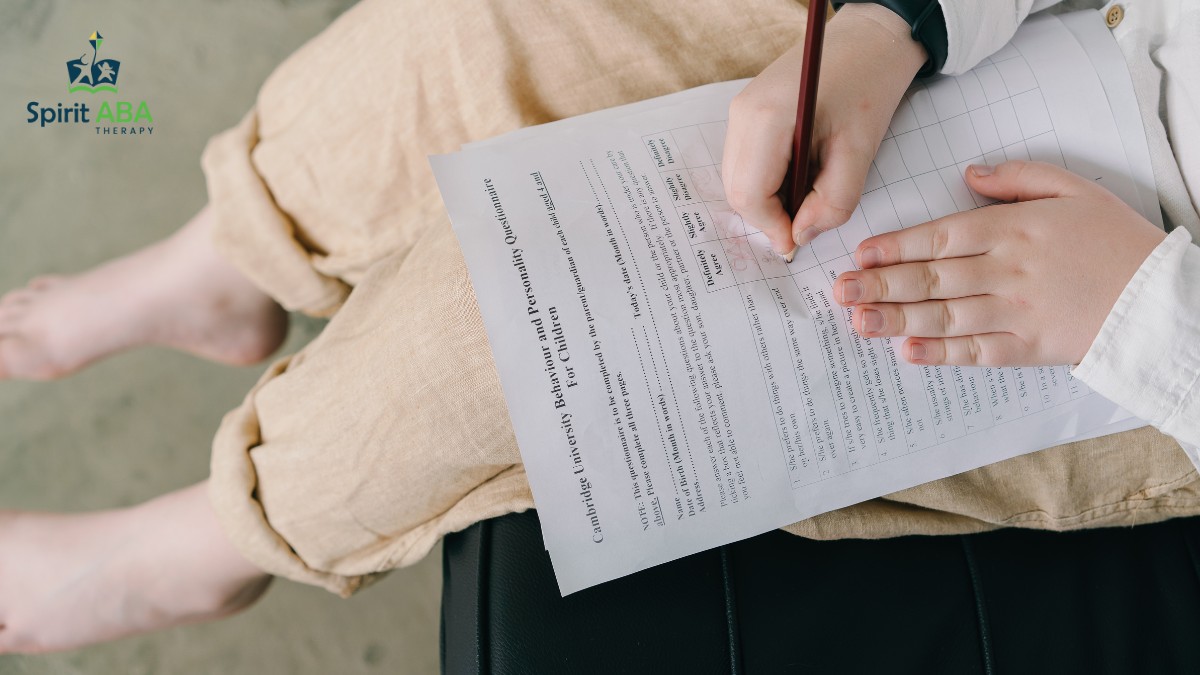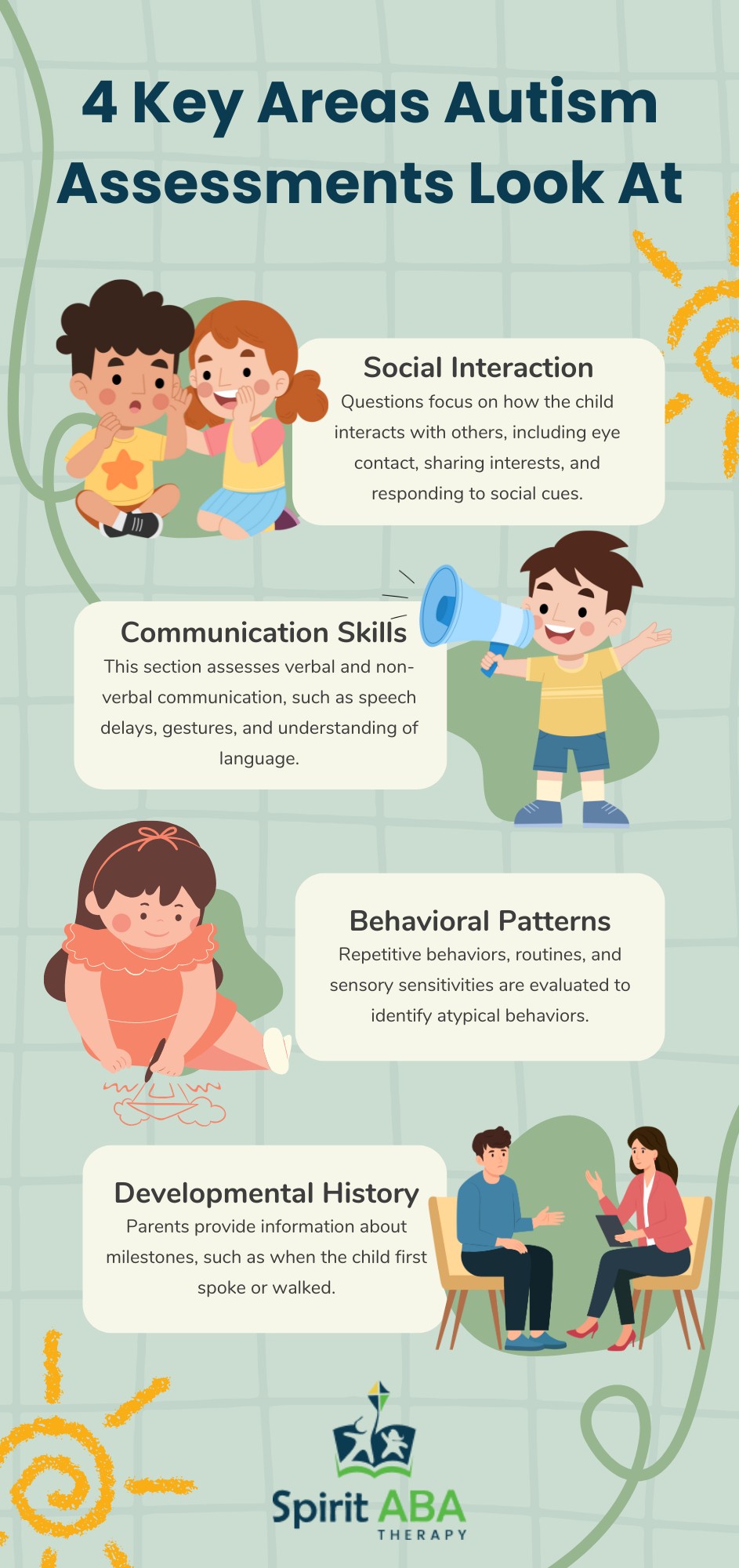Key Points:
- Autism assessment forms are critical tools for early screening and accurate diagnosis of autism spectrum disorder (ASD).
- These forms evaluate social, communication, and behavioral patterns to identify developmental concerns.
- Early diagnosis through structured assessments can lead to timely interventions, improving long-term outcomes.
- Parents and caregivers play a vital role in providing accurate information during the assessment process.
Early detection of autism can change lives. An autism assessment form is a powerful tool that helps parents and clinicians identify developmental red flags, ensuring children get the support they need as soon as possible.

What Is an Autism Assessment Form?
An autism assessment form is a standardized tool used by healthcare professionals to gather information about a child’s developmental and behavioral patterns. These forms are not diagnostic on their own but serve as a critical first step in identifying potential signs of autism. They help clinicians determine whether further evaluation is necessary.
The forms typically include questions about a child’s social interactions, communication abilities, repetitive behaviors, and sensory sensitivities. Parents, caregivers, or teachers often complete these forms, providing valuable insights into the child’s daily functioning.
Why Are Autism Screening Tools Important?
Early detection of autism can significantly impact a child’s developmental trajectory. Screening tools like autism assessment forms help identify red flags early, allowing for timely intervention. Research shows that children who receive early support often show improvements in communication, social skills, and adaptive behaviors.
These tools are also essential for ruling out other developmental conditions that may present similarly to autism. By using a structured approach, clinicians can ensure a more accurate and comprehensive evaluation.
How Does an Autism Assessment Form Work?
Autism assessment forms are typically divided into sections that evaluate different areas of development. Here’s how they work:

These forms are often used alongside direct observations and clinical interviews to ensure a thorough evaluation.
Common Types of Autism Screening Tools
There are several widely used autism screening tools, each designed for specific age groups and purposes. Here are three of the most common:
- M-CHAT (Modified Checklist for Autism in Toddlers): Used for children aged 16 to 30 months, this form is a quick and effective tool for identifying early signs of autism.
- ASQ (Ages and Stages Questionnaire): This tool screens for general developmental delays, including autism, in children up to 5 years old.
- SCQ (Social Communication Questionnaire): Designed for children aged 4 and older, this form focuses on social and communication skills.
Each tool has its strengths and is chosen based on the child’s age and specific concerns.
What Happens After the Screening?
If the autism assessment form suggests potential signs of autism, the next step is a comprehensive diagnostic evaluation. This process is more detailed and involves multiple components to ensure accuracy.
Developmental Testing is often the first step. Clinicians assess cognitive, language, and motor skills to understand the child’s overall development. This helps rule out other conditions that may mimic autism symptoms.
Behavioral Observations are another critical part. Professionals observe the child in different settings, such as during play or structured tasks, to evaluate social interactions, communication, and repetitive behaviors.
Parent Interviews provide deeper insights. Clinicians ask detailed questions about the child’s developmental history, behaviors, and milestones. Your input as a parent is invaluable in painting a complete picture.
Finally, a formal diagnosis is made using the DSM-5 criteria, which outline specific behaviors and symptoms associated with autism. If a diagnosis is confirmed, the clinician will discuss the next steps, including early intervention options like ABA therapy, speech therapy, or occupational therapy.
The Role of Parents in the Assessment Process
Parents and caregivers play a crucial role in the autism screening and diagnosis process. Your insights and observations are invaluable, as they provide a detailed picture of your child’s behavior in everyday settings. Clinicians rely on this information to make informed decisions.
Here’s how you can actively contribute to the assessment process:
- Document Behaviors: Keep a journal or log of your child’s behaviors, including social interactions, communication patterns, and any repetitive actions. Note when these behaviors occur and how often.
- Be Honest and Detailed: When completing an autism assessment form, provide accurate and thorough answers. Don’t downplay or exaggerate concerns—your honesty ensures the most accurate evaluation.
- Share Developmental History: Be prepared to discuss milestones, such as when your child first spoke, walked, or met other developmental markers. This helps clinicians understand your child’s growth trajectory.
- Ask Questions: If you’re unsure about any part of the process, ask the clinician for clarification. Understanding the steps involved can help you feel more confident and engaged.
Take the First Step with Spirit ABA
If you suspect your child may be showing signs of autism, don’t wait. Early screening and diagnosis can make all the difference. At Spirit ABA, we specialize in providing personalized ABA therapy to help children with autism reach their full potential.
Providing ABA therapy services across Colorado, Iowa, and Nebraska, our dedicated team specializes in ABA therapy designed to meet each child’s unique needs. From the first screening to a personalized treatment plan, we’re with you every step of the journey.
Contact Spirit ABA today to schedule an autism assessment and take the first step toward a brighter future for your child.


